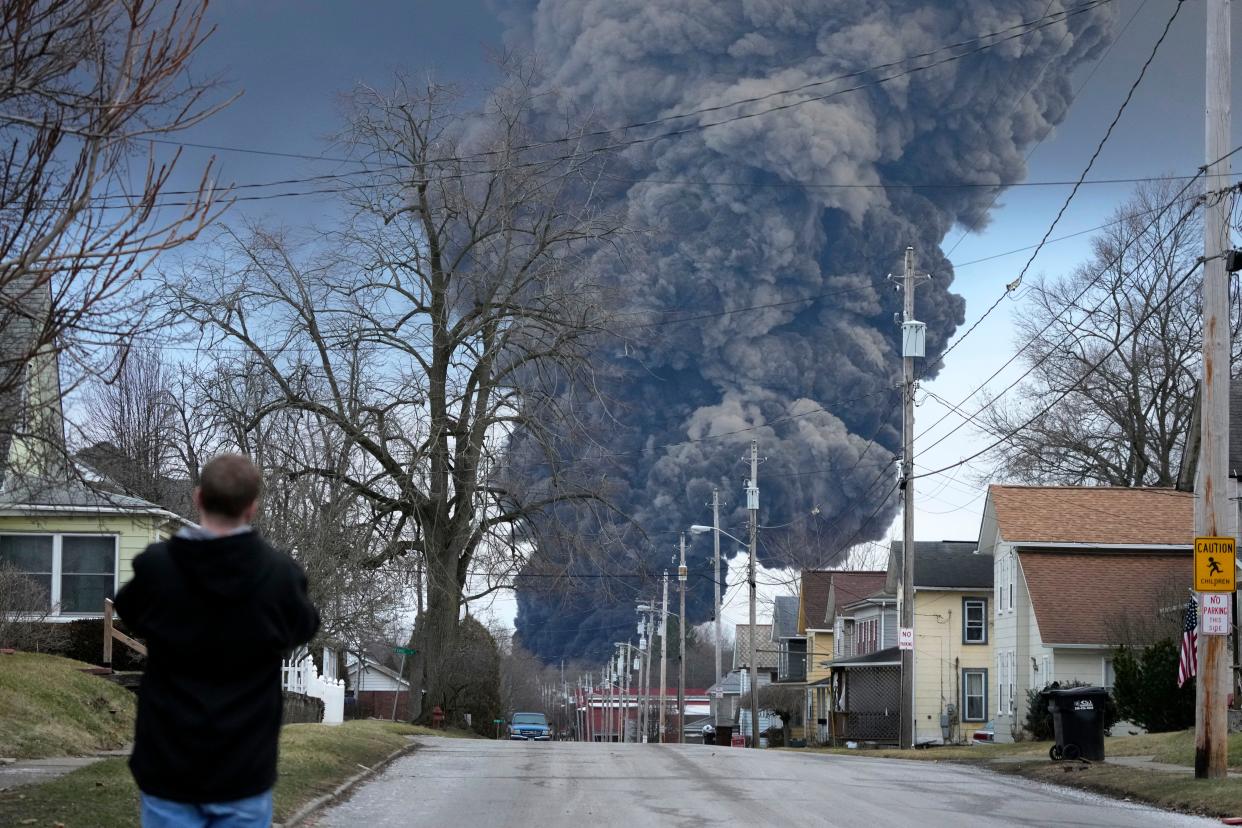More than 5 tons of vinyl chloride are emitted into the air in North Carolina each year

In 2020, air permit holders in North Carolina emitted 5.5 tons of vinyl chloride — the same chemical that was released from rail cars during a train derailment in East Palestine, Ohio, last month.
To illustrate the magnitude of that environmental disaster, an estimated 550 tons of vinyl chloride was released in East Palestine one week, according to a lawsuit filed against Norfolk Southern, the railroad owners. That’s 100 times more than North Carolina emits into the air in a year.
More:Chemours advances with Fayetteville site expansion; residents skeptical
A known carcinogen, vinyl chloride is a colorless gas with a sweet odor that burns easily. It is used to make plastics, but it can be emitted from other sources, including landfills, paper mills and wood product manufacturers.

In North Carolina, vinyl chloride emissions increased by 20% from 2017 to 2020. Landfills are the largest source of emissions, primarily because microbes breakdown chlorinated solvents present in the waste — plastics, degreasers, spot removers, even cosmetics. Of the top 20 emitters statewide, 17 of them are landfills.
More:7 years to fix it: Cumberland County hosting open house on Ann Street landfill’s future
The Sampson County Landfill, which already carries the dubious distinction of ranking second in the nation in methane emissions, also led the state in vinyl chloride air releases: 3,224 pounds — or 1.6 tons. That figure is a 61% increase since 2017. That uptick coincides with the 25 tons-and-counting of garbage rotting in the landfill, which accepts waste from 44 counties.
More:Fayetteville PWC to temporarily stop adding ammonia to water disinfection process
Here are the top 10 landfills for vinyl chloride emissions, in pounds, for the Year 2020. Figures are from the NC Department of Environmental Quality’s air quality division. Facilities in bold indicate they are located in predominantly communities of color, neighborhoods where at least 30% of residents are low-income, or both.
Sampson County –3,224
Cleveland County — 893
Kersey Valley (High Point) — 533
Foothills Environmental (Caldwell County)– 386
White Oak (Haywood County) — 384
Wayne County — 335
Davidson County — 298
New Hanover County –275
Onslow County –245
Blackburn Sanitary (Catawba County) — 242
Here are the top 10 emitters that are not landfills:
International Paper Riegelwood Mill, Columbus County — 433
Millwork and Panel, LLC, Catawba County — 318
Blue Ridge Paper Products, Haywood County — 288
Charlotte Pipe & Foundry, Plastics Division, Union County– 166
Black Creek Renewable Energy, Sampson County — 109
Domtar Paper, Washington County — 104
National Pipe & Plastics, Guilford County — 92
Rocky River Regional Wastewater Treatment Plant, Cabarrus County –83
Color Path Technologies, Jones County — 80
CPI Southport — 67**Facility closed in 2021 after being fined $474,000 for repeated air quality violations.
This article originally appeared in NC Policy Watch, a project of the North Carolina Justice Center. It is a news and commentary outlet dedicated to informing the public, including elected officials, and ultimately to improving the quality of life for all North Carolinians. It has been used with permission.
This article originally appeared on The Fayetteville Observer: 5 tons of vinyl chloride are emitted into the air in North Carolina each year

